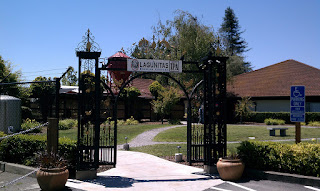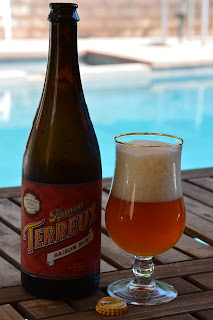"opprobrious term of "scoff-law" to indicate the chap who indicts the bootlegger..."
Chicago Tribune - January 27th, 1924
The Scofflaw cocktail is a direct result of Prohibition. The name itself was entered into Webster's Dictionary in 1924 as someone of a contemptuous law violator. The law in question here was the Volstead Act. This National Prohibition Act was enacted to carry out the intent of the Eighteenth Amendment, which established prohibition in the United States.
The Scoff-law Cocktail emerged less than two weeks after the initial coining of the word in 1924. It was created at Harry's New York Bar in Paris by barman Jock. The term originally referred to a person who imbibed and was a frequenter of speakeasies. The recipe and short story makes it into the pages of Harry's Barflies and Cocktails.
Scoff-law Cocktail.
One dash of Orange Bitters, 1/3 Rye, 1/3 French Vermouth, 1/6 Lemon Juice, 1/6 Grenadine.
Chicago Tribune, January 27th, 1924: "Hardly has Boston added to the Gaiety of Nations by adding to Webster's Dictionary the opprobrious term of "scoff-law" to indicate the chap who indicts the bootlegger, when Paris comes back with a "wet answer" - Jock, the genial bartender of Harry's New York Bar, yesterday invented the Scoff-law Cocktail, and it has already become exceedingly popular among American prohibition dodgers."
The who, what, where and when of Prohibition:
The Anti-Saloon League's Wayne Wheeler conceived and drafted the bill, which was named for Andrew Volstead, Chariman of the House Judiciary Committee, who managed the legislation. The Eighteenth Amendment to the United States Constitution prohibited the production, sale and transport of "intoxicating liquors", it did not define "intoxicating liquors" or provide penalties. It granted both the federal government and the states the power to enforce the ban by "appropriate legislation." A bill to do so was introduced in Congress in 1919. The bill was vetoed by President Woodrow Wilson, but his veto was overridden by the House and Senate. The National Prohibition Act became effective October 28, 1919 and January 16, 1920. The act was repealed by the Twenty-first Amendment and prohibition died on December 5, 1933.
Repeal Day is celebrated by cocktail enthusiasts and imbibers annually on December 5th.
This cocktail has become one of my go-to's for someone looking to try a whiskey cocktail. It has beautiful candied citrus and pomegranate aromas, with a delightful nutty, pomegranate and citrus mouth coating and an off-dry finish. As with most classic cocktails, I keep the original elements but, adjust for a more spirit forward style:
Barragan's Scofflaw :
2 oz Whistle Pig Rye Whiskey
1 oz Dolin Dry Vermouth
1/2 oz Grenadine Syrup
1/2 oz Lemon Juice
2 dashes Regan's Orange Bitters
Shake all ingredients in a shaker and strain into Martini Glass and garnish with a lemon zest.
Cheers!


















































